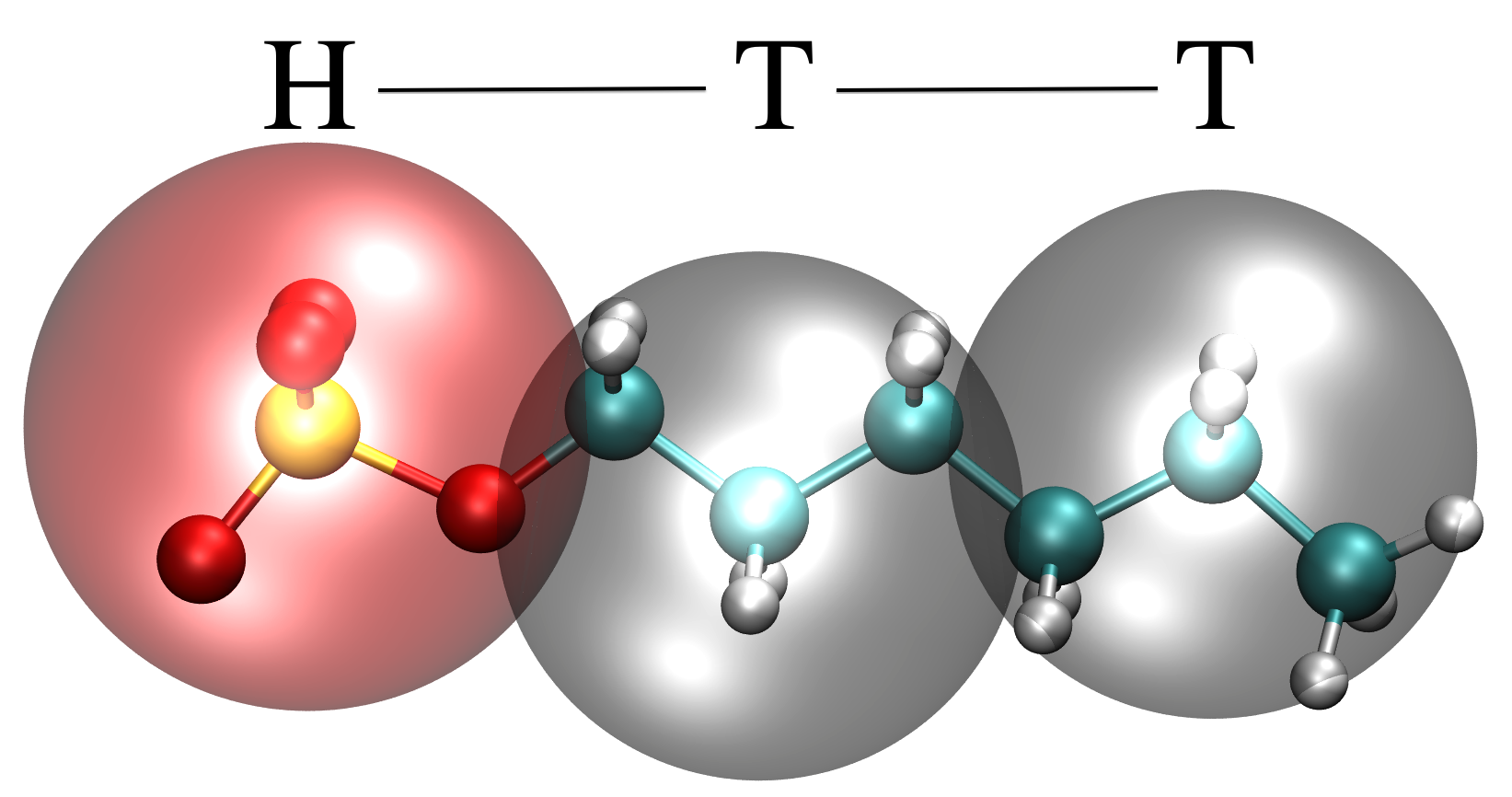
Structural properties: How do specific
interactions (hydrophilic, hydrophobic) lead to nano-structuration of
fluids? What is the influence of such structures on thermodynamic and
transport properties?
More: Artola (2013)
Structural properties: How do specific
interactions (hydrophilic, hydrophobic) lead to nano-structuration of
fluids? What is the influence of such structures on thermodynamic and
transport properties?
Force fields for mesoscopic scale: Describing
matter at the mesoscopic level requires a Langevin-type dynamic and
both conservative and dissipative forces. We develop approaches to
derive forces from atomistic models (bottom-up approach).
Non equilibrium thermodynamics: How does a
multicomponent mixture behave in a thermal gradient? Can we predict
separation ratio and transport coefficients from simple models and/or
molecular modelling?
Mechanical properties of heterogeneous materials:
Semi-crystalline polymers exhibit both amorphous (or glassy) and
crystalline regions with different mechanical properties. In this
problem, typical length scales are of a few nanometers. How can we
describe and characterize such objects at the atomistic level?

More: Artola (2013)

More: Mai (2014), Trément (2014)

More: Artola (2013), Artola (2015)

More:Pandiyan,2013